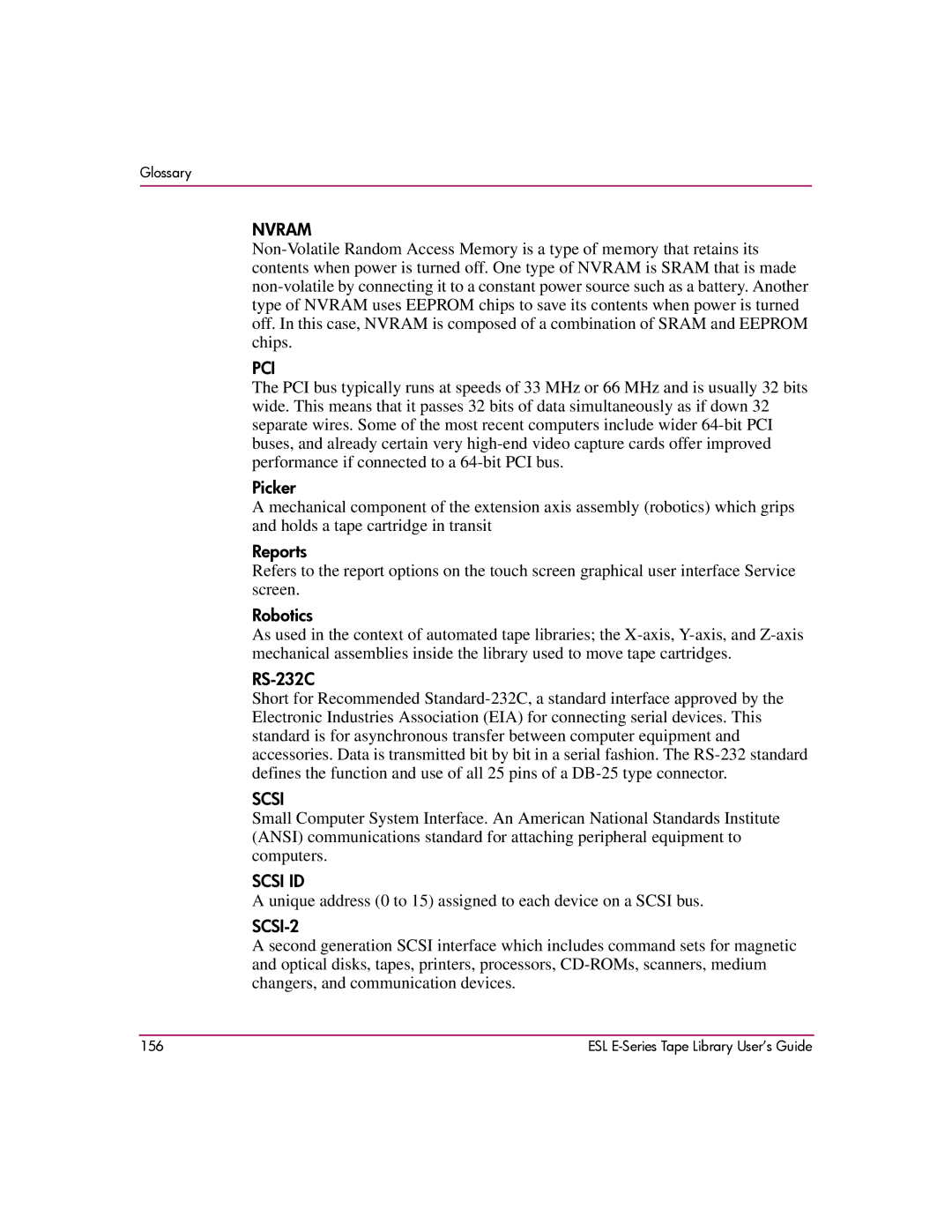NVRAM
Non-Volatile Random Access Memory is a type of memory that retains its contents when power is turned off. One type of NVRAM is SRAM that is made non-volatile by connecting it to a constant power source such as a battery. Another type of NVRAM uses EEPROM chips to save its contents when power is turned off. In this case, NVRAM is composed of a combination of SRAM and EEPROM chips.
PCI
The PCI bus typically runs at speeds of 33 MHz or 66 MHz and is usually 32 bits wide. This means that it passes 32 bits of data simultaneously as if down 32 separate wires. Some of the most recent computers include wider 64-bit PCI buses, and already certain very high-end video capture cards offer improved performance if connected to a 64-bit PCI bus.
Picker
A mechanical component of the extension axis assembly (robotics) which grips and holds a tape cartridge in transit
Reports
Refers to the report options on the touch screen graphical user interface Service screen.
Robotics
As used in the context of automated tape libraries; the X-axis, Y-axis, and Z-axis mechanical assemblies inside the library used to move tape cartridges.
RS-232C
Short for Recommended Standard-232C, a standard interface approved by the Electronic Industries Association (EIA) for connecting serial devices. This standard is for asynchronous transfer between computer equipment and accessories. Data is transmitted bit by bit in a serial fashion. The RS-232 standard defines the function and use of all 25 pins of a DB-25 type connector.
SCSI
Small Computer System Interface. An American National Standards Institute (ANSI) communications standard for attaching peripheral equipment to computers.
SCSI ID
A unique address (0 to 15) assigned to each device on a SCSI bus.
SCSI-2
A second generation SCSI interface which includes command sets for magnetic and optical disks, tapes, printers, processors, CD-ROMs, scanners, medium changers, and communication devices.
